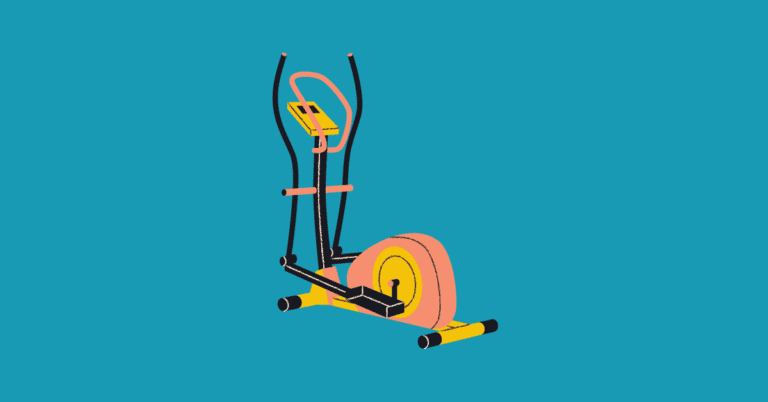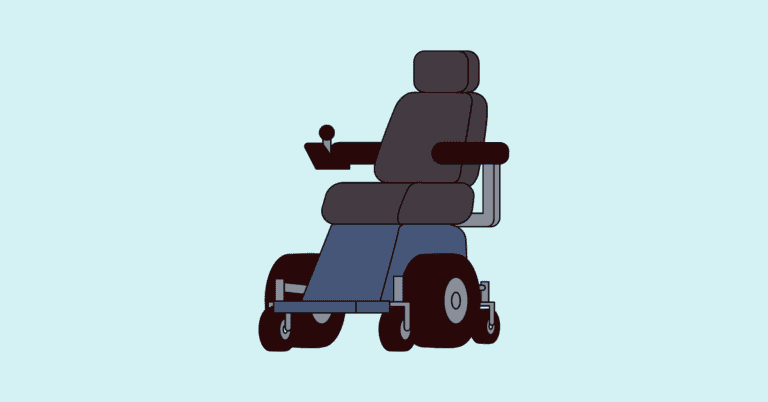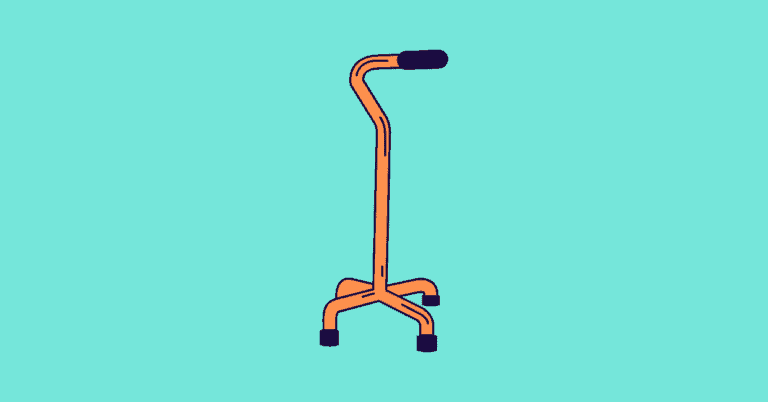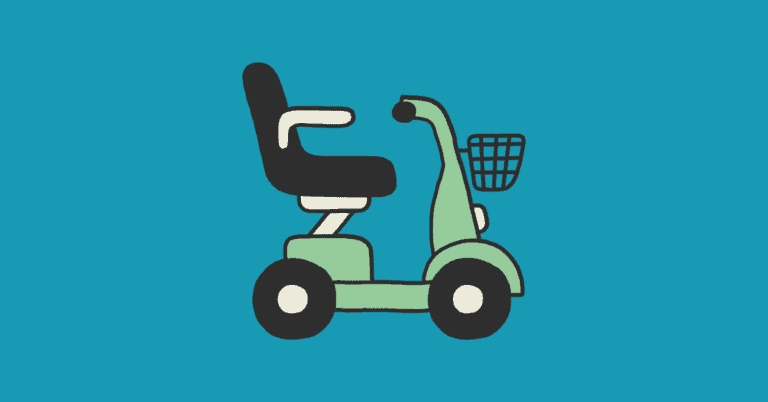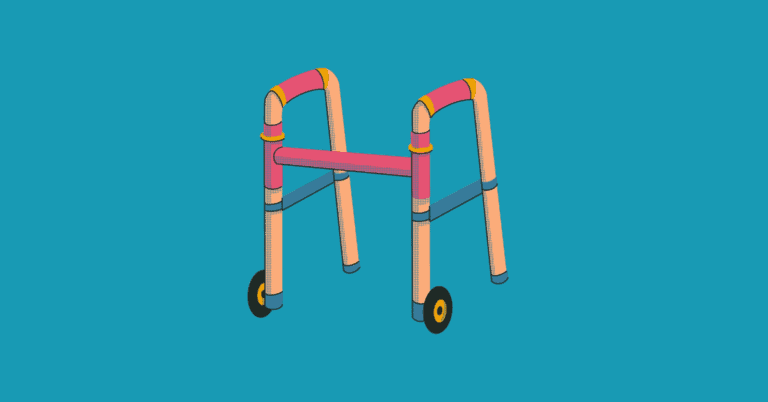What Is A Rollator? Differences Between Rollators And Walkers

Walkers and rollators – two terms that are frequently tossed around interchangeably but they are two different types of mobility aids.
Evenmore, rollators can be considered as a type of walker by some, which is why rollators can be termed “rollator walkers”. This isn’t incorrect but it can add to the confusion when trying to distinguish between the two options
Even within the separate categories of walkers and rollators, there are different types of each.
This article explains the differences between walkers and rollators, and further discusses their unique features, functionalities, and roles they play in providing mobility assistance.
What is a rollator?
A rollator is a mobility aid designed to enhance the independence and mobility of individuals with varying degrees of mobility challenges.
Unlike traditional walkers, a defining feature of a rollator is that it has four wheels, providing a smoother glide across different surfaces.
Another defining characteristic of a rollator is its built-in seat, providing users with the convenience of taking a seated break whenever needed.
In terms of safety, rollators typically come equipped with push-down brakes, allowing users to easily control their speed and come to a secure stop when necessary.

This combination of features – four wheels, a built-in seat, and push-down brakes – sets rollators apart, making them a popular and effective choice for those seeking enhanced mobility and support.
In sum,

What are the different types of rollators?
Individual rollators have a range of distinctive features, such as wheel size, types of brakes, weight of rollator, and folding mechanism. These characteristics set each rollator apart, each offering different advantages; for instance, certain models may be more suitable for navigation while others are better for uneven outdoor environments.
The ideal rollator for you hinges on your specific needs and priorities.
While the standard rollator is the most prevalent, new designs are coming to the forefront, including the three-wheeled rollator and upright rollator.
Note, all rollators come with some sort of brake system, with the hand brakes being most common. Similar to a bicycle, you push up to brake. To lock the rollator (such as before and while sitting), push the brakes downard, and this should hold in place.
Standard rollator
The standard rollator – a very common mobility aid – includes the four wheels, a seat, and height adjustable handles.
Compared to walkers, rollators are the most stable option for assistive devices in terms of stability and balance support.
Also, a traditional rollator is a good option for individuals with limited walking endurance; in my experience, the ability to take seated rest breaks when necessary is often highlighted as one of the most significant advantages by patients. No doubt, the convenience is great but it also allows users to carry out their daily tasks with greater independence.
Three wheel rollator
Three wheel rollators have a cone-shaped front design in order to improve navigation and maneuverability in tight spaces and crowded areas; this can be a major advantage for individuals who predominantly use their walkers indoors, especially in narrower spaces.
Keep in mind that, because it only has 3 wheels, it’s not as stable as a regular four wheel rollator.
Also, it usually doesn’t have a seat due to its design.
Upright rollator
The upright rollator distinguishes itself from traditional models by emphasizing a more upright posture during use. Unlike standard rollators, the upright rollator comes with armrests, providing a place to rest your elbows and forearms. This design can be beneficial for individuals experiencing hand or wrist weakness, such as arthritis.
That said, it’s essential to ensure that the height is adjusted appropriately because having it too high may lead to your shoulder being shrugged during use.
While using a regular rollator doesn’t inherently promote a forward posture, its base of support is positioned further in front, potentially leading to a forward-leaning stance over time if posture is not consciously maintained.
In the case of the upright rollator, the base of support is closer, encouraging a more upright position. However, it’s important to consider that the unique design and increased width of upright rollators result in a larger turn radius. This characteristic may pose challenges when navigating tight spaces or narrow corridors.
Regardless, the decision to opt for an upright rollator depends on individual preferences and priorities related to posture and arm support.
In sum,

General features to consider when choosing a rollator:

Just wanted to expand on why wheel size matters:
Rollators equipped with smaller wheels are ideal for indoor use, as they offer a smaller turn radius, facilitating easier navigation in tight corners and confined spaces. Conversely, rollators featuring larger wheels, despite having a broader turn radius, excel in maneuvering uneven and rough terrain, providing a smoother ride when used outdoors.
The decision between smaller or larger wheels hinges on the user’s specific needs and the intended scenarios of use, whether predominantly indoors or outdoors.
What are the different types of walkers?
Walkers are another common type of mobility aids.
The two main types of walkers are standard walker and rolling walker, with the later being the most common type of walker.

Standard walker (aka Traditional walker)
Standard walkers are characterized by their four legs and absence of wheels. They may be less prevalent today, but still find utility, especially in temporary settings like hospitals. Unlike wheeled walkers, standard walkers require lifting off the ground every two steps.
A traditional walker is good for temporary use, such as during the recovery phase after lower limb surgery or injury, offering a means to unload weight from the affected leg.
It’s crucial to note that for those with severe balance deficiencies, more stable mobility aids like rolling walkers and rollators may be preferred alternatives to a regular walker.
Rolling walker (aka wheeled walker)
Rolling walkers are wheeled walkers; specifically they have two front wheels and tennis balls or rubber tips on the back two legs, allowing the user to slide the walker forward during ambulation (instead of having to lift the walker).
They offer stable support, and based on what you are using it for – it can allow you to either reduce weight on one limb or completely unload the weight from a specific leg. By relying on the other leg and arms for support, individuals can maintain mobility and independence during recovery.
For those seeking intermittent assistance throughout the day, choosing a rolling walker proves to be a practical and user-friendly solution since it is lightweight and easy to fold and store.
Rollators and Assistive/Mobility Devices in Healthcare
Assistive devices, including rollators and walkers, are vital tools in healthcare environments, such as hospitals and outpatient physical therapy clinics.
Integration into rehabilitation programs
The integration of assistive devices into rehabilitation programs plays a pivotal role in various scenarios
In many cases, a big component of post-surgical or lower limb injury recovery is mobility device training to ensure proper usage and adherence to post-surgical precautions, which is vital to safeguard the healing areas.
For individuals with conditions that impact balance and stability, such as Parkinson’s disease, the inclusion of assistive device training is paramount for safety and fall prevention.
Prescriptions and medical recommendations
Medicare Part B serves as supplementary medical insurance, providing individuals the option to opt out if they choose. For those enrolled in Medicare Part B, assistive devices like rollators fall under the durable medical equipment (DME) category.
However, it’s important to understand that reimbursement for specific assistive devices comes with specific eligibility criteria. So, not everyone may qualify for Medicare reimbursement due to the complexity of rules and procedures.
Navigating the reimbursement process for your assistive device involves a series of steps, which can vary in order and specificity. Typically, for those considering an assistive device through Medicare Part B, it begins with a doctor prescribing the device as a medical necessity. Following the prescription, the next step is to coordinate with a certified occupational therapist, physical therapist, or a Medicare-approved wheelchair supplier. Your therapist may also have recommendations for approved suppliers, making the process more accessible.
The collaborative assessment by your therapist aims to understand your mobility needs, medical condition, and lifestyle requirements. This forms the basis for accurate form submissions to Medicare. The time it takes to obtain your assistive device varies based on factors such as the extent of customization required.
It’s important to note that Medicare covers the basic level of DME products for specific conditions. When you need new equipment, your doctor must provide documentation stating its medical necessity for your condition. Understanding these steps and working closely with your healthcare team can facilitate a smoother process for obtaining the necessary assistive devices through Medicare.
Is a rollator better for balance than other mobility aids?

In the realm of walking assistive devices, a basic hierarchy of balance support can be observed. At the foundational level is the cane, serving as the most minimalist aid for light assistance. Following this, a regular/rolling walker steps in to provide increased stability. The rollator takes the lead as the most supportive among the three, making it the recommended choice for individuals with significant balance deficiencies or those at a higher risk of falls.
Notably, the inclusion of a seating option in a rollator further emphasizes its suitability for individuals with lower walking endurance. This feature allows users to take breaks as needed, highlighting the rollator’s versatility in addressing various mobility challenges.
Of course, this comparison doesn’t account for other assistive devices such as electric wheelchairs or mobility scooters, which may cater to different levels of mobility needs.
What are other types of assistive devices?
Canes
Canes are beneficial for individuals seeking moderate to minimal support while walking or navigating uneven surfaces. They are commonly used to improve balance, alleviate pain (especially for arthritis), or provide support to a weaker leg.
Various types of canes exist, such as single point canes, quad canes (offering more stability with four points of contact), seat canes, and more.
Manual wheelchairs
These wheelchairs are propelled by the user’s own physical effort, either by pushing the wheels with their hands or by someone assisting from behind. It’s important to note that longer-term manual wheelchair use does require a decent amount of upper body strength and endurance.
Individuals often choose a manual wheelchair not only because they possess the physical capability but also for the flexibility it provides. For instance, manual wheelchairs are lower in maintenance, lightweight, and therefore more portable. Additionally, in certain situations, they may offer better accessibility when navigating uneven surfaces and terrains.
Some people prefer alternating between a manual wheelchair and a power wheelchair, selecting based on their daily needs and activities. Alternatively, an individual may find that a manual wheelchair better aligns with their goals for physical activity and independence. The versatility of manual wheelchairs allows users to tailor their choice to meet specific requirements and preferences.
Electric wheelchairs

Serving as an advanced assistive device, electric or motorized wheelchair provides significant support, especially for individuals dealing with lower limb paralysis or conditions affecting muscular health and voluntary activities. In these situations, electric wheelchairs are frequently the preferred option for achieving maximum independence.
Within the category of electric wheelchairs, there are a diverse array of options for consideration. The ideal electric wheelchair for an individual hinges on their needs and priorities. At large, electric wheelchairs distinguish themselves through features such as power tilting, recline capabilities, and varying wheelchair frame designs, addressing a broad spectrum of purposes. For instance, an electric wheelchair with power tilting may prove advantageous for individuals requiring assistance with pressure relief.
In essence, electric wheelchairs are most suitable for individuals facing more pronounced mobility challenges, especially those who encounter difficulty walking or standing for extended periods. The key lies in exploring the available features and functionalities to find the electric wheelchair that aligns seamlessly with your unique requirements.
Mobility Scooters
Mobility scooters are assistive devices designed to provide individuals with mobility limitations greater independence and accessibility in their daily lives. They are battery-powered vehicles equipped with handlebars or a tiller for steering, a seat, and typically feature a platform for resting the feet. These scooters offer a practical solution for individuals who may have difficulty walking long distances or navigating uneven terrain, generally used by individuals with more voluntary control over their limbs and trunk control.
Overall, they serve as a tool for those with mobility impairments, enabling them to participate more fully in social activities, run errands, and engage in various daily tasks with greater ease and comfort. Unlike electric wheelchairs, which are controlled primarily via a joystick or specialized controls, mobility scooters offer handlebar steering akin to small vehicles, making them suitable for outdoor use and longer excursions.
Bottomline
Rollators – with their four wheels, seating options, brakes – are a great longer-term use assistive device. If you are considering whether a rollator or another assistive device would be a beneficial addition, don’t hesitate to consult with a healthcare professional.
